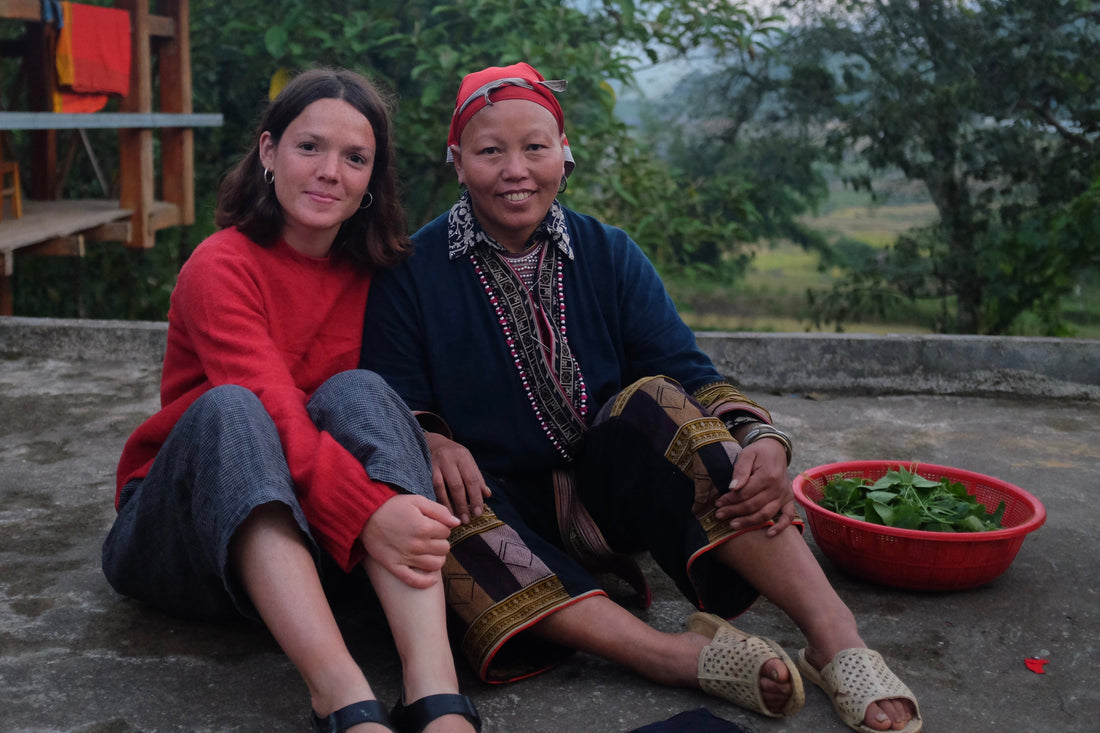
AISHATH VISITS TAMAY & ME

Indigo plant used to dye the cotton fabric
About ten years ago now my older brother bought me a beautifully embroidered jacket from Sapa in northern Vietnam. At the time, I knew little about its cultural significance nor the processes that went into making it. It has, however, been one of my wardrobe staples ever since. In fact, my friends have borrowed it on more than several occasions too. It was only after discovering Tamay and Me - a small organisation designing and making mien embroidered jackets like the one I have - that I learnt about the incredibly skilled women behind jackets like mine. Tamay is one of these women and this month on a trip to Vietnam I got the chance to ask her all about mien embroidery and its place in her community. Needless to say my jacket has now taken on a whole new meaning for me, one which I think we should be able to ascribe to all our clothes.


Tamay - mother, grandmother and businesswomen - was clearly a prominent figure in Taphin village Tamay makes her own embroidered clothing, helps her friends in the village sell theirs at her market stall in Sapa and collaborates with Hannah to make beautiful jackets for Tamay and Me. Sitting with Tamay, dressed head to toe in her own carefully embroidered clothes, I could see just how much skill and time goes into each intricate garment and how busy Tamay must be.
Most of the people that live in Taphin, a small village situated in the mountains near the chinese border, are Mien. This identity is represented through their embroidered clothing, which Tamay tells me girls begin learning as young as seven so they can make the clothes they will eventually get married in. Every year, women also make a new set of clothing to celebrate the New Year in February. This process can take up to a year. While we were there Tamay was working on part of a sleeve she told us had taken her four months so far!
Sitting with Tamay’s family friends and their daughter, it was clear though that the tradition of wearing mien clothing is becoming less common. The younger generation were all wearing clothing we’d be more familiar with - jeans and t-shirts for example. But Tamay says it’s important that the craft continues to be passed down to younger generations. Not only does it carry cultural significance, acting as a representation of their community, but it provides a means for women to earn an income. While we might seek to get away from an ever-growing stream of tourists, Tamay says it is great for the women in her village. It allows them to sell the beautifully crafted wares they dedicate so much time to.
Visiting Tamay and learning about mien embroidery really helped consolidate for me why it is so important that the supply chain behind our clothes is transparent. Tamay remarked that lots of tourists were shocked by the prices of her jackets. But if the process of dying, embroidering and sewing were all considered, then perhaps people would not only understand these prices but think they should be higher. Having the opportunity to witness only a small part of this process exposed the fact that to make clothes with a low price tag, someone, or something has to be exploited.



